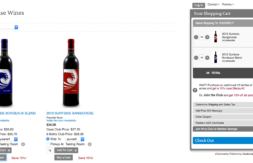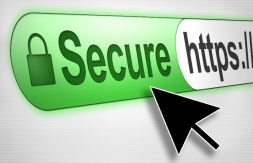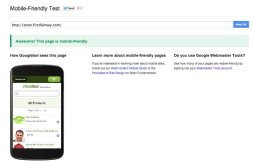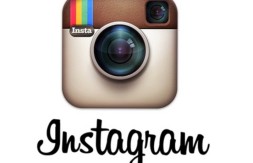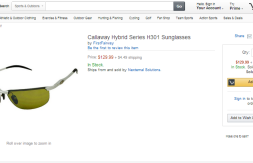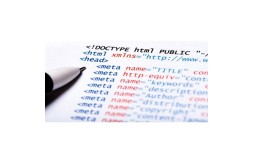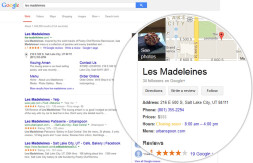When is the Best Time to Send Email Campaigns?

 Our customers constantly ask us about optimal email send times. Since we are strong marketers, our friends ask us too:). In fact, it was recently reported that according to Google this question is searched on average each month over 1,600 times in the US, and over 2400 times worldwide. Seems like someone should come up with a definitive answer already, right? Actually, it may encourage you to know that the person who can best answer that question is you!
Our customers constantly ask us about optimal email send times. Since we are strong marketers, our friends ask us too:). In fact, it was recently reported that according to Google this question is searched on average each month over 1,600 times in the US, and over 2400 times worldwide. Seems like someone should come up with a definitive answer already, right? Actually, it may encourage you to know that the person who can best answer that question is you!
We’ll get to the general trends in a moment, but the truth is, that like many answers to broad marketing questions, the answer to this age-old question is (drumroll here) “Well, that depends.” It depends upon a number of factors specific to your messages, your customers, and your past experience with your database. Some factors to consider include:
*What kind of email are you sending – Promotional? Newsletter? Survey request? (will the recipient be in the right frame of mind and have the time to do what you want them to do when they receive your email?)
*Who are the recipients – Consumers? Businesses? Partners? Vendors? (when might they be reading their emails?)
*What email addresses do you send to – Business? Home? (will they be there to receive it, and will they be in the frame of mind to open and read it?)
*What are the recipient demographics – Teens, Boomers, Seniors, Socio-economic class? (how busy are they, when might they read emails?)
These factors are important because different folks are interested in doing different things at different times of day. For instance, it’s less likely that at 8pm a corporate purchasing agent will read an email sent to a work email address soliciting office supply purchases, than it is for a parent, who just put the kids to bed, to read a personal email at 8pm soliciting a purchase for a special wine that they love. We don’t need statistics to tell us this – a little common sense will take you a long way in the right direction here. Think about your own behavior – which emails do you read and when, when are you likely to make an online purchase, etc. You may or may not be typical, but thinking these things through with regard to your own circumstance may give you clues as to how your customers think, or how you need to change your conclusions to accommodate the differences between your lifestyle vs. your customers’ lifestyles.
Once you’ve come up with some ideas based on common sense, analyzing past email statistics as well as A/B testing to check and modify your hunches will definitely serve you well. If you use the Nexternal Mail Chimp integration, you may find it helpful to follow these directions, posted by Mail Chimp, on How to Calculate Your Best Day to Send Email Campaigns with Mailchimp reports based on past campaigns sent to your database. Constant Contact users might find this Constant Contact blog entry helpful. Finally, you may find general trends helpful, although different marketers running different studies often come to different conclusions. That’s why these trends are not a substitution for gathering data specific to your purpose, your audience and your past experience.
Historically the golden rule has been that Tuesday, Wednesday and Thursday are the best days to send emails. Today there is some evidence that Sundays may also be a good day to send, because more and more people are using this day to shop online, check email, and prepare for the week ahead. Typically most marketers agree that emails sent on Fridays and especially Saturdays, will produce the worst open rates, click-throughs and conversions.
Get Response, an email marketing company, analyzed 21 million messages sent in 1stQ 2012 and came up with the following results:
23.63% of all opens occur within the first hour after the email is sent
9.53% of the opens occur in the 2nd hour after the email is sent
6.30% of the opens occur in the 3rd hour after the email is sent
4.8% of the opens occur in the 4th hour after the email is sent
However, these open rates are NOT true at all times of day. They found that at 5pm folks are probably more focused on getting home from work than opening emails, at 6pm they are likely more focused on dinner, 7pm they are often focused on the kids, and it isn’t until 8pm that many get back to checking emails.
Their conclusion: in general, it may be best to send emails to arrive in in-boxes between 8am and 10am, or between 3pm and 4pm, when your database is most likely engaged.
Another consideration is that if you send an email during business hours, it is more likely to get opened in a standard format. If you send it off hours, it is likely to be viewed on a mobile device. Although mobile commerce is growing quickly, most people would still prefer to order on a non-mobile device so you may be best served to send the email during business hours, unless you know, based on your data, that your particular target audience consists mostly of mobile shoppers.
We’ve preached in the past about the importance of analyzing your data to better your future marketing, and this is no exception – getting it right is dependent upon the particulars of your database. So use your common sense, think about what you are delivering and to whom, when they might be receptive, and then test, test, test.



